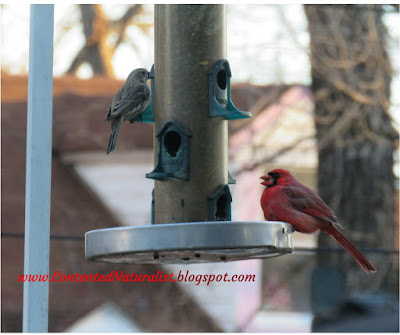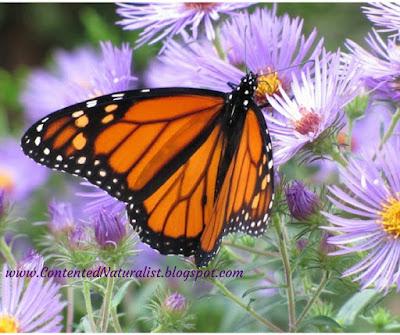This weekend is one of my favorite Citizen Science projects:
the Great Backyard Bird Count, or GBBC for short. This is a four-day event that
takes place on President’s Day weekend every year (or the second full weekend
in February, for those of you not in the United States). If you haven’t already
joined in, you should! I’ve included basic instructions at the end of this
post.
[I should note, I'm posting this from the road (literally-- as we drive through Georgia), so will post a second part with photos in a few days when I have a better internet connection.]
Anyway, the GBBC began in 1998 and is run by the National Audubon
Society and the Cornell Lab of Ornithology. To participate, you count birds for
at least 15 minutes on at least one of the four days (February 16 to 19 in
2018). Then you enter your data at
birdcount.org or directly at
ebird.org. You’ll need to set up a free
eBird account if you don’t already have one, since the eBird tool and app are what make the online count possible..
The great part about GBBC is that it’s a global snapshot of
the birds, and takes place everywhere at the same time. I like knowing that all
over the world tons of other birders and bird watchers are counting along with
me!
Although the count refers to backyards, you don’t need a
yard or garden to participate. Count anywhere you like. This year, the GBBC
coincided with the weekend after we planned to go to New Orleans for Mardi Gras. So we made a trip
out of it.
Mardi Gras itself was February 13. After we finished up in
New Orleans, we swung through central Florida for a few days. We did this the
last time Mardi Gras coincided with the GBBC too.
However, because we were in tropical Florida this year, I
definitely got more species than I did for last year’s GBBC. My favorite
sightings so far have been:
·
My first-ever Monk Parakeet, in St. Petersburg
·
Tons of Black Skimmers, also in St. Petersburg
·
An American Kestrel spotted by my husband as we
drove back north on Sunday (no photo of that one, of course)
·
Palm Warblers at Disney World, constantly bobbing their tails as they hunted for gnats and other tasty insects.
·
Yellow-rumped Warblers, which were nearly
ubiquitous in some of the resort areas of Disney World
·
Roseate Spoonbills along the road as we drove
north, as well as flying overhead in St. Petersburg
·
Sandhill Cranes by the side of the road in
Florida as we headed north
·
A non-bird sighting, but still exciting
nonetheless: a manatee in a bayou in St. Petersburg! That was definitely
unexpected since we didn’t go specifically looking for manatees. This one found us,
though.
We’ll get home to Maryland tonight, and collapse into our
beds. Tomorrow I hope to bulk up my list if I can squeeze a decent birding trip
in between unpacking and laundry. I hope you try your hand at the Great
Backyard Bird Count this year too. Let me know in the comments what you think!
If you want to participate, here’s what to do:
- Go to ebird.org and set up an account if you don’t
already have one.
- Count birds anywhere you like. Out your office
window is fine, out your kitchen window, anywhere is fine. The most urban city neighborhood
to the most remote wilderness, or anywhere in between—all locations can help
scientists see how birds are doing right now.
- If you want to use the eBird app, you can tally
your birds instantly without having to do an extra step of logging into the
main website. Download the free eBird Mobile app, then start a new checklist
each time you do a count. Recent updates to the mobile app even track your path
and calculate your distance for you, so you won’t have to guess when eBird asks
you how far you traveled. Pretty cool!
- If you prefer to keep track of your checklists on paper, you can still enter them through the eBird website.
- If you don’t feel confident about your bird identifications,
another free app can help, called Merlin, also from the Cornell Lab of Ornithology. It will ask you questions about the
bird’s size, what colors it has, and show you photos of birds that match your
description. Then you select which photo matches your bird, and voila! You have
your identification. I used Merlin frequently in Florida this trip, and usually
it helped me figure out the right bird pretty much immediately.
- Complete as many checklists as you want, from as
many different locations as you want, from the 16th through the 19th.
All of the checklists will be gathered to make this year’s snapshot.
- Since 2018 has been declared the Year of the Bird, why not make
this the year you try birding in a different way than you have before? Enter
your sightings online at eBird if you never have, or include photographs or
even sound recordings. The GBBC weekend is a great time to practice your
skills, and maybe bring some non-birding friends along.
- There’s also an annual photograph contest for
GBBC, so don’t forget your camera! Have fun birding, and let me know what you
find, in the comments below.











